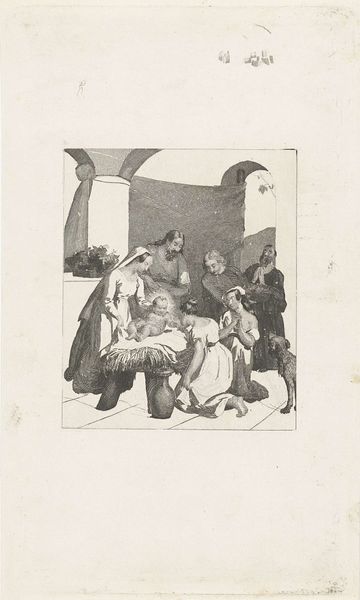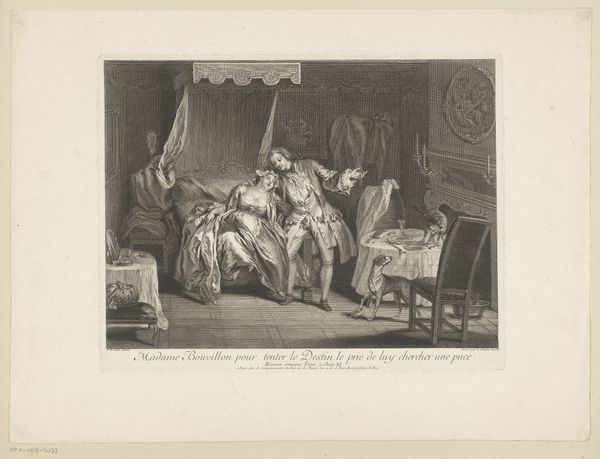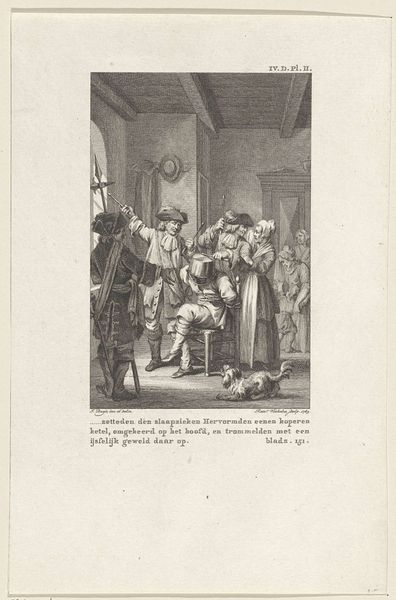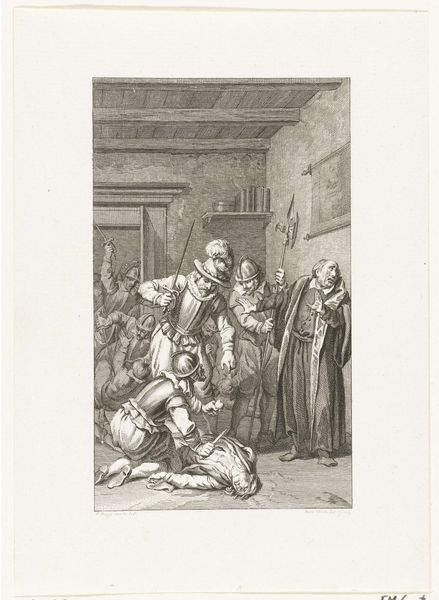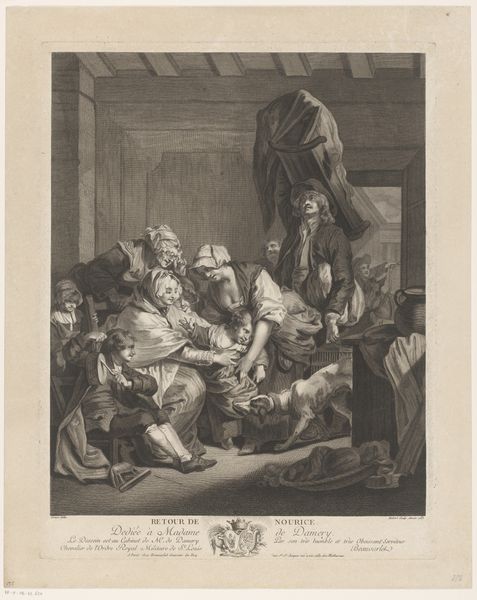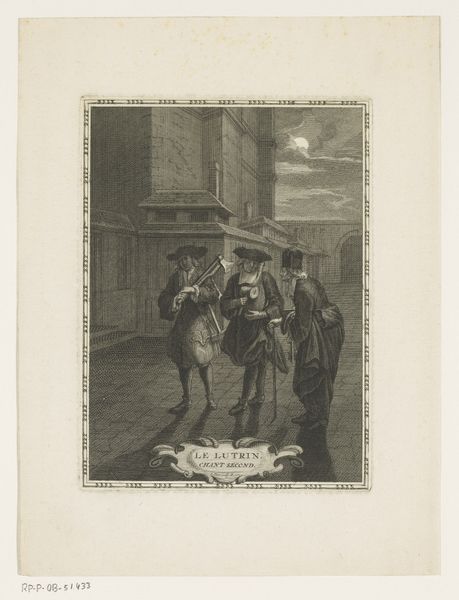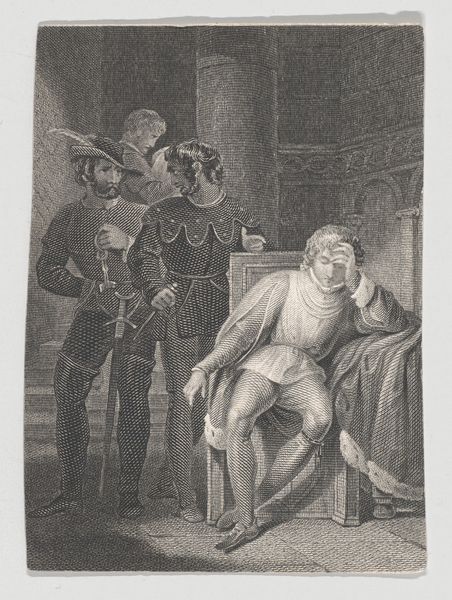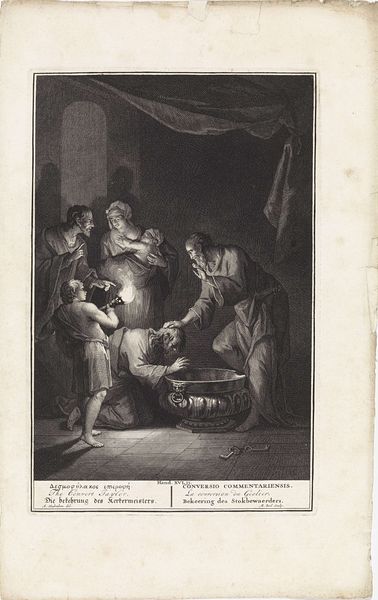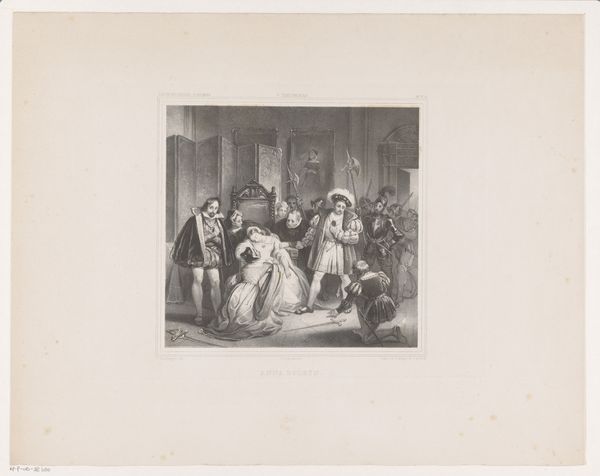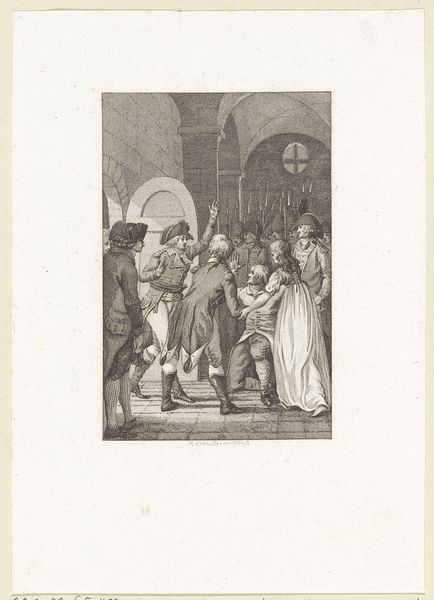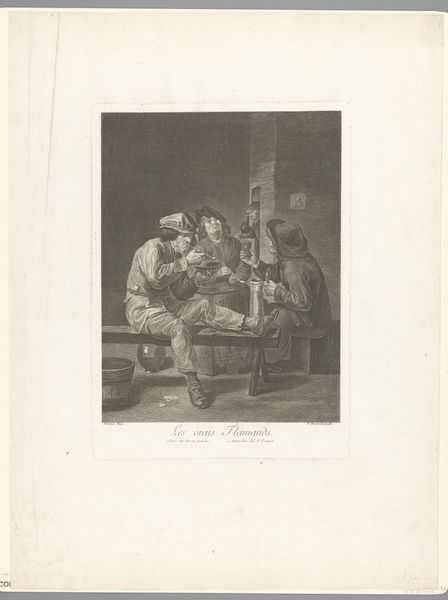
drawing, print, engraving
#
portrait
#
drawing
#
medieval
# print
#
dog
#
old engraving style
#
landscape
#
figuration
#
genre-painting
#
history-painting
#
engraving
Dimensions: height 455 mm, width 309 mm
Copyright: Rijks Museum: Open Domain
Curator: This print, entitled "Gewonde krijgsman door soldaten opgevangen", which translates to "Wounded Warrior Supported by Soldiers," dates to around 1860-1870 and is attributed to J. Kuyper. It employs an engraving technique. Editor: The scene definitely captures a specific moment of vulnerability amidst what appears to be medieval conflict, with heavy emotion hanging in the air. I am getting strong messages about the complexities of masculinity. Curator: Indeed, considering the image was created during a time of rising nationalism and evolving social roles, it can be viewed through a lens of redefined masculinity. The fallen warrior embodies fragility and dependence, disrupting conventional images of male strength prevalent in art history. Editor: Absolutely. How interesting to explore gendered tropes through art, even, or especially, from periods when we might expect something altogether more prescriptive or narrow. What social and institutional function was it supposed to serve at the time of its release? Curator: Engravings like this served several purposes. Dissemination of information was primary, circulating narratives both factual and allegorical among a wider public. Morality tales, or historical accounts emphasizing patriotism were incredibly popular. Beyond illustration, however, consider the role the image had in fostering collective identities. Editor: This makes me wonder who controlled the narratives, how these historical portrayals might glorify aspects of war whilst minimizing its very real horrors for those less privileged than this 'warrior.' The image's emotional appeal, after all, works in concert with whatever politics are at play. Even the very human image of his dog elicits further emotion. Curator: Right, there are tensions worth teasing out. The engraving participates in constructing notions of national identity rooted in idealized pasts, perhaps overlooking present disparities, the warrior is being comforted not by the community, but his fellow warriors only, even his dog seeks only to serve the individual rather than those communities. What, indeed, did the image leave out. Editor: I find myself thinking about whose stories aren't being told—a reminder to continually question dominant narratives. Thank you. Curator: A potent point on which to reflect. Thank you, indeed.
Comments
No comments
Be the first to comment and join the conversation on the ultimate creative platform.

